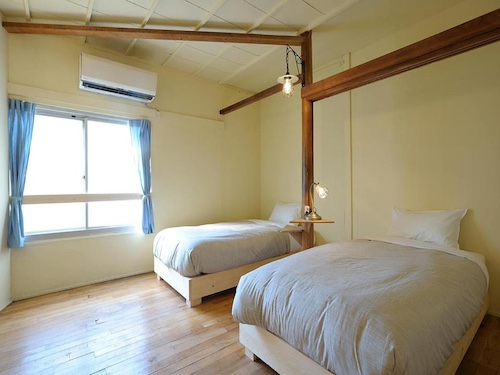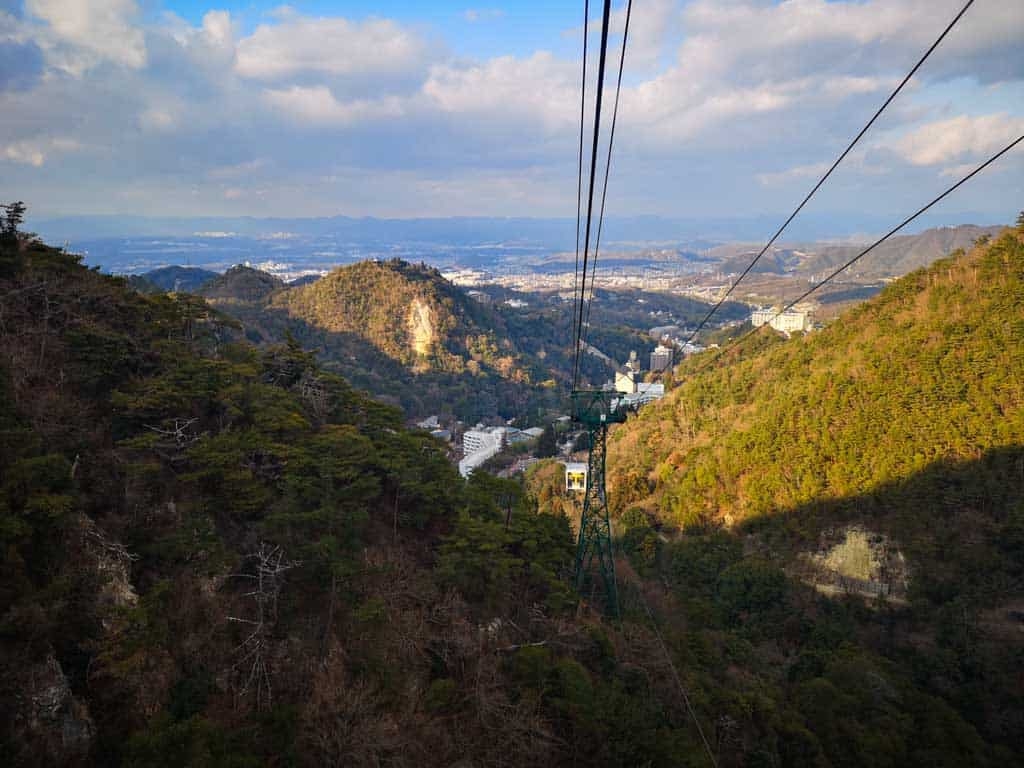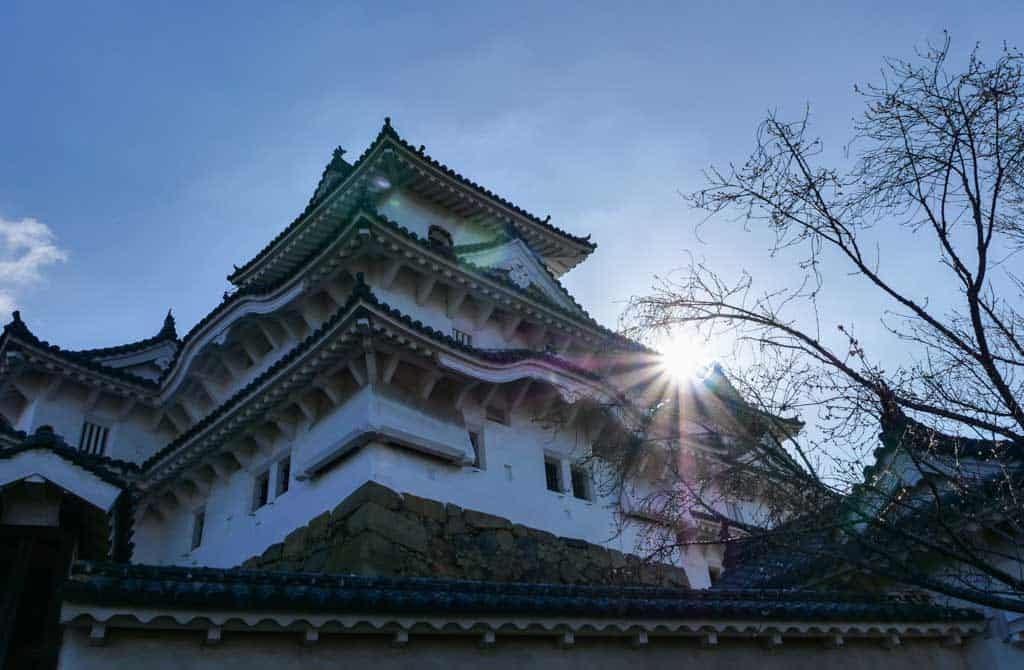Page Contents
The things to do in Kobe, Japan go way beyond just hot springs and famous beef. I finally made it back to Japan after a year, and this time, I headed straight to Kobe, a city I’d somehow skipped on my last trip.
And honestly? What a big mistake not coming sooner.
I spent a few days exploring and figured I’d pull together a list of the best things you really shouldn’t miss. If Kobe’s on your radar, this should help you figure out what’s worth your time.
Things to Do in Kobe, Japan – Overview
Before going through the best things to do in Kobe Japan, let’s discuss the essentials that I wish I knew before visiting, such as the location, getting there, and more.
Where is Kobe?
Kobe is a beautiful city sitting between the Rokko Mountains and Osaka Bay, not far from Osaka. It’s part of the Kansai region on Japan’s main island, Honshu. The mix of mountain views and waterfront makes it a great place to explore.
Kobe has long been a key hub for foreign trade, thanks to its strategic location and busy port.
Short on time?
Here are the quick things you need to know for your trip to Japan
These are our reliable partners and services that I recommend and personally use on my trips.
➡️ Search for the best Tours on Viator & GetYourGuide
➡️ Look at luxury or affordable hotels on Booking or Expedia
➡️ Options for Car rental
➡️ The best travel insurance for Japan
➡️ Check the flight prices from the UK or the USA
➡️ Make sure you have your e-SIM!
Each offers unique value and special deals tailored just for you. Don’t miss out on these when travelling to Japan!
How to Get to Kobe?
Getting to Kobe is straightforward, thanks to Japan’s public transportation network. By air, the nearest airport is Kansai International Airport in Osaka.
From there, you can take a direct train or bus to Kobe, which takes about an hour.
If you’re travelling by train, Kobe is well-connected to major cities like Tokyo and Kyoto via the Shinkansen (bullet train), followed by a short local train or subway ride to the city centre.
How to Get Around Kobe?
we took public transport nearly all the time, and we found it very easy, with far more than expected in English. We flew into Kansai International airport, directly from Amsterdam.
At the airport there’s a very useful information centre with all your options and English-speaking guides to help you. From Tokyo, Kobe takes around 3 hours on the impressive Shinkansen bullet train and from Kansai airport to Kobe you can either take a bus or even a ferry to the harbour.
It’s also near Kyoto and Osaka, and the popular Nara Park, meaning you can visit them all in one hit.
Is Kobe Japan Worth Visiting?
Kobe is 100% worth a visit. It’s got that rare mix of history, modern vibes, and amazing food, especially the Kobe beef, which really lives up to the hype.
You can explore old western-style mansions in Kitano, hike in the Rokko mountains, or relax in the hot springs at Arima Onsen. The city also has a powerful story of resilience after the Great Hanshin Earthquake, with spots like the Kobe Maritime Museum worth a visit.
Doesn’t it sound like the perfect spot for pretty much anyone? Also, if you plan to visit Japan’s capital, check out this article about where to stay in Tokyo.
Best Time to Visit Kobe City
The best time to visit Kobe City is in the spring (April to May) and fall (October to November). During these seasons, you can enjoy mild temperatures and beautiful cherry blossoms or autumn leaves.
Summers can be hot and humid, while winters are cold but usually not extreme.
Best Tours in Kobe, Japan
10 Unique Things to Do in Kobe, Japan
Arima Onsen
Pure and simple, if you come to Japan you have to experience an Onsen, and Arima Onsen is one of the top rated Onsen’s in Japan.
An Onsen is a Japanese Hot Spring, and it’s basically a large Spa experience with certain rules or etiquette which must be respected.
Men and women are separated and here’s my quick checklist of rules for surviving the Japanese Onsen!
Onsen Etiquette
- Go Naked (only bringing a small towel)
- Wash before you bath (wash stations are next to the pools)
- No tattoos (sorry it’s taboo in Japan, you can’t go in)
- Don’t drop your towel in the water (keep it in your hand or on your head)
- Don’t dip your head or hair in the water
- Cover your privates with the towel when possible
Did you know? The Geisha in the Kansai region are in fact called Geiko?
After the Onsen there’s plenty more to do here. We ate a Bento selection for lunch at their incredible restaurant and had the chance to wear a traditional Yukata outfit and drink tea.
The latter is available if you are staying in the hotel, and the rooms are a wonderful mix of modern and traditional, with breathtaking views.
Finally, Arima itself is beautiful town and has a selection of gift shops to wander around, we also had Matcha Tea at Geiko Café ‘Ito’ which was wonderful. It’s also where you find the cable car to the next place on this list, Mount Rokko.
Beyond the upscale hot springs, you’ll also find traditional public baths scattered throughout the city, which is nice if you want a more local experience.
Just nearby, the Rokko Garden Terrace offers cafes, shops, and unbeatable panoramic views.
Hot Tip: If you’re coming from Osaka, the best way to visit is to join a day tour, which includes a stop at the onsen, Himeji Castle, and Mount Rokko! Check it out here below.
Mount Rokko
Our next stop was Mount Rokko, we took the cable car (or Ropeway) from Arima to Rokko Sancho, but there are plenty of ways to hike to the top for the energetic, and a cable car from Rokko Cable Shita too.
You could spend a couple of days hiking this area alone if you have time. Once you’re at the top of the observation deck, make sure you visit the Rokko-Shidare Observatory, a fantastic piece of architecture designed like a tree using several local materials.
Following that we headed to Tenran Café for dinner and an incredible sunset over Kobe and Osaka. You could truly see for miles, just take a look at the time-lapse in the video.
I also found Tenran Café amazing as not only were the prices very reasonable, it was a relaxed setting and it had its own dedicated viewpoint, perfect for setting up the camera.
Like I said before, Mount Rokko is included in the day tour from Osaka, and you’ll be with a knowledgeable guide, which is awesome!
Hike to a Waterfall
Who would have thought that after hiking for only 20 mins from the Shin-Kobe station, which is right in town, you can get to two magnificent waterfalls?
Well I couldn’t believe it either, the fantastic Nunobiki Falls are stunning, and literally a stone’s throw from the city.
You first pass the Mentaki Falls followed by the Ontaki Falls (my favourite), and if you keep hiking there’s spectacular views over the city of Kobe and a reservoir to enjoy. The hike starts a connection of paths that lead all the way to Mount Rokko and Arima Onsen.
If I had a couple more days here, this is exactly what I’d be doing: hiking all around this area.
There seems to be so much countryside to explore, and what I particularly liked is that a lot of locals and schools were utilising the countryside on their doorstep.
If you keep walking uphill, you’ll reach the Kobe Nunobiki Herb Gardens, packed with herbs, flowers, and a cable car back down.
Himeji Castle
Heading to the town of Himeji will take you around 45 minutes from Kobe City, but coming this way will kill two birds with one stone.
This is because just around the corner is the Shoshazan Engyogi Temple (below). Himeji is one of the most typical Japanese castles to have survived from the Feudal period. It dates back to 1333, which is staggering. It also survived World War II and the devastating 1995 earthquake.
Entry to the most visited castle in Japan (yes, it’s that too!) cost 300 Yen, and I recommend at least a couple of hours to look around.
Hot Tip: Try Conger Eel! This local delicacy is right next door to the castle by the beautiful gardeb at Yamayoshi.
Shoshazan Engyogi Temple
The next on this list if the temple made famous for being features in The Last Samurai, the epic 2003 movie directed by Edward Zwick starring Tom Cruise.
The Shoshazan Engyogi Temple is just on the edge of Himeji, and to get there from Himeji castle you’ll need to take a bus and the cable car. There are 3 main wooden temple halls known as Mitsunodo.
The setting is serene, overlooking the city below, it’s like a peaceful mountain retreat and you can see why many movies use it as a filming location.
Entry to the temple is 500 Yen, you also need to pay for the cable car and the shuttle bus if you don’t want to take a 20-minute walk.
Sunset Cruise
The Kobe harbour itself and Merikan Park is a lovely area of Kobe worth exploring, you’ll find the Ferris Wheel, the recognisable Kobe Tower, and a monument to the 1995 earthquake.
It’s close to the Motomachi shopping street if that’s your cup of tea, and it’s also where we hopped on board the ship for a sunset cruise.
Docked alongside the uniquely designed Kobe Meriken Park Oriental Hotel, we boarded the Luminous Kobe 2 just in time for sunset. The views were beautiful and seeing the city lit up on the way back was equally stunning.
If you’re hungry head to Hopstand for Craft Beer tasting and chicken on a stick called Yakitori. It doesn’t sound very Japanese, but Yakitori is a traditional skewer and trust me, it’s amazing.
Sake Museum
Sake is a huge Japanese tradition known as a rice-wine, it’s made by fermenting rice and converting starch into sugars to ferment, and it’s bloody lovely.
I always love a brewery or distillery tour, especially one that keeps all the traditions passed down through the centuries. Kiku-Masamune is an authentic dry sake that’s distinguished by the Yoshino cedar aromas.
We learnt all about the Kimoto method, a painstaking technique passed down through generations, where in the museum you can see the process step-by-step.
Finally, as you can see in the video, we thoroughly enjoyed the sake tasting and even brought a bottle home.
Did you know? They hold the sake in cedar barrels to give the sake a woody fragrance.
Eat some Delicious Kobe Beef
For meat eaters Kobe Beef is a delicacy that must be tried. I don’t eat a lot of beef these days, but I was keen to try this, at least once. Kobe Beef is from a breed of Wagyu Japanese cattle, there’s a rumour they are fed beer and massaged with sake – I’m not sure I’m buying that!
We chose to eat it at Kobe Plaisir, right in the heart of Kobe one minute from Sannomiya station. It was a really nice restaurant and the chef grilled the food in front of us on an iron plate, I love that.
Then it came to tasting the beef. It was tender and flavoursome, that kind of melt-in-the-mouth experience. Honestly, I loved it and could have eaten it every day. The beef had a hint of juice and fat, which just added more flavour.
Kobe beef isn’t cheap, the Kobe Beef Teppan-yaki lunch menu starts at 22,000 Yen (approx. £117/$150) but trust me when I say it’s the real deal. You save money going for lunch rather than dinner and won’t find a quality Kobe beef for much cheaper, it’s just one of those things to try once.
Yes, I’m aware that street food is delicious and cheap in Japan, but can you say you visited Kobe if you didn’t have beef?!
Enjoy the Kobe Nightlife
I tried to do a bit of research before I arrived in Kobe, to get a feel for what the nightlife has to offer.
That’s because I’ve been to Japan and quite honestly the nightlife is a minefield! If you don’t speak Japanese or aren’t with a local, it can be difficult, and if you’re alone (as I was on my previous trip), it’s quite daunting.
Thankfully we had a few things planned, and I managed to quiz our guide enough to find out more, although I must admit we had such a packed itinerary I didn’t exactly party until dawn.
Firstly, for Jazz check out Restaurant Sone, which had a relaxed atmosphere and an impressive live Jazz band and good food to boot. It’s right in the middle of the Sannomiya area, where the main stations are.
Sannomiya is a good starting point as there are many bars and restaurants here, it’s got that typically lively, bright lights buzzing Japanese feel to it. You can find a mix of people and live music at Garage Paradise and a few bars and restaurants in Chinatown.
One thing to remember, is that many bars are up high, meaning you need to look out for the signs downstairs and take the elevator up, often to a small private bar.
It’s a gamble, as you have no idea what you’ll get until you open the door, and once you do that you’re already committed. But it’s fun!
Take a Day Trip to Osaka
My final tip is to head to Osaka, as a city it has a lot to offer and it’s often picked over Kobe. Personally, I think Kobe offers a more authentic experience and more to do. But don’t miss Osaka.
We started at Osaka Castle, which is beautiful and another one of the most visited castles in Japan. You can take a Gozabune boat trip around the castle, allowing you to get up close to the moat and find out about the history for 1,500 Yen.
You can also head to the Miraiza Osaka-Jo shopping centre where you can learn to be a Samurai for around 2,000 Yen for 20 minutes, that was great fun.
There’s also a rooftop bar and restaurant with excellent views over the castle, and a shop with a traditional Matcha Tea ceremony, perfect to relax with after a long day exploring.
During the trip to Osaka we also headed to the Hiraoka Shrine to get our fortune read. The shrine sits at the foot of Mount Ikoma and is a short walk from Hiraoka station.
From here you can walk down through the Iskikiri shopping street and stop for some food and see the second shrine, Ishikiri Tsurugiya.
Finally, for some typical Japanese madness, there’s Dotonbori Street. Dotonbori is a lively entertainment district with bright lights, theatres, shops, bars and restaurants. It has the buzz found in many Japanese cities, and comparable to the Shibuya area of Tokyo.
Where to Stay in Kobe City
Here are some great places to stay in Kobe for a fabulous trip.
Luxury: Daiwa Roynet Hotel

Mid-Range: Brenza Hotel

Budget: Kobe Guesthouse Maya

Conclusion – Things to Do in Kobe Japan
These are just some of the best places to visit in Kobe city center and around if you’re planning your trip. And I’m sure that you’ll have an amazing time in town, just like myself.
To learn about culture, make sure to visit the Kobe Earthquake Memorial Park or the historic Ikuta Shrine, and for a nature escape, enjoy the panoramic views from Mount Rokko.
My trip to Kobe was sponsored by Visit Kobe to experience all Kobe has to offer in advance of the Rugby World Cup, but as always the photos, thoughts and opinions in this article are my own.
Share Me
Sharing this article with your family and friends on Facebook, Pinterest or Twitter really helps keep Intrepid Escape going, thank you!



































